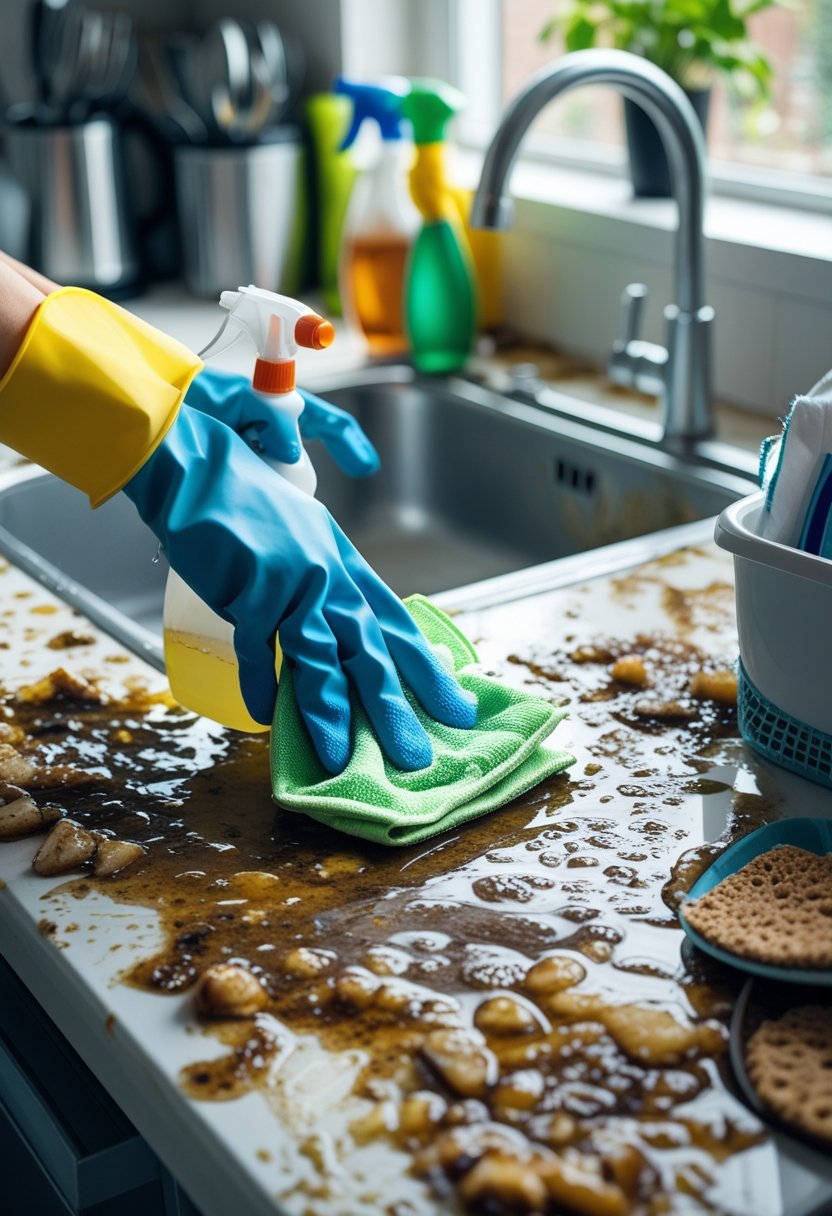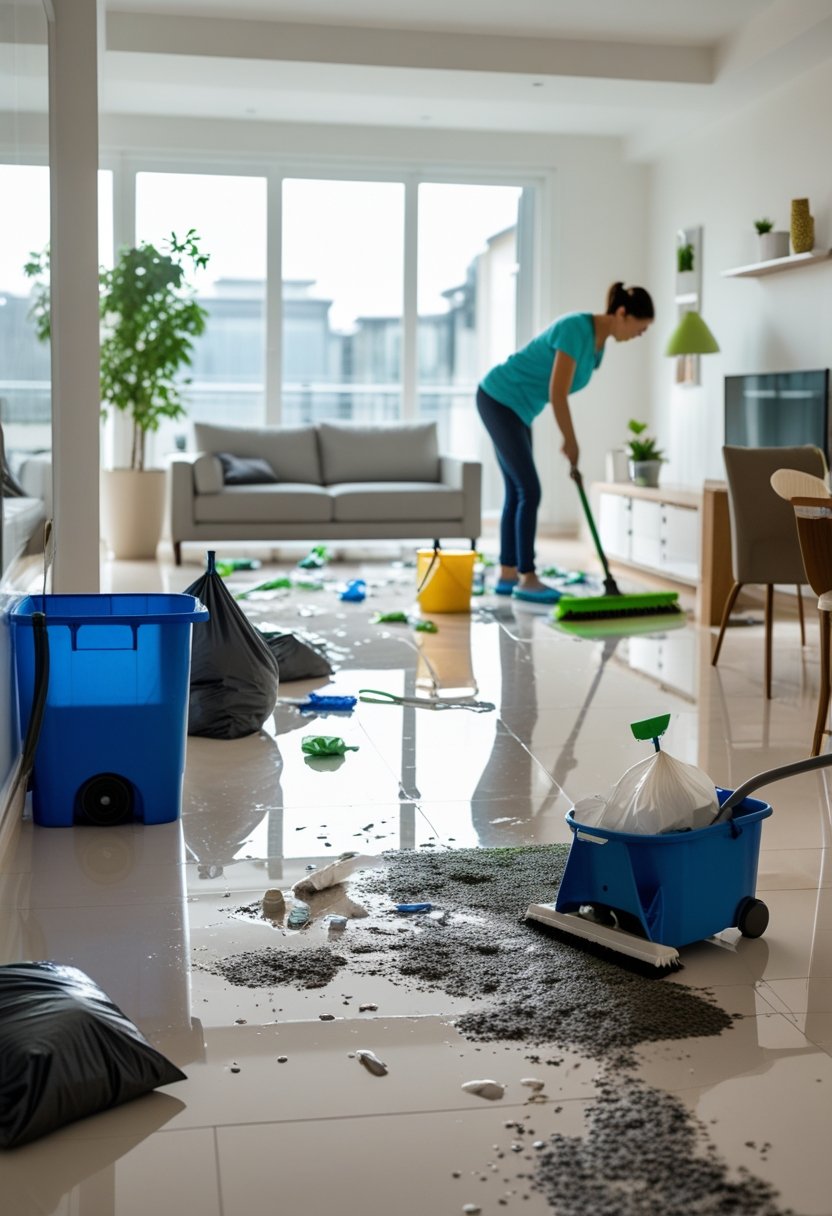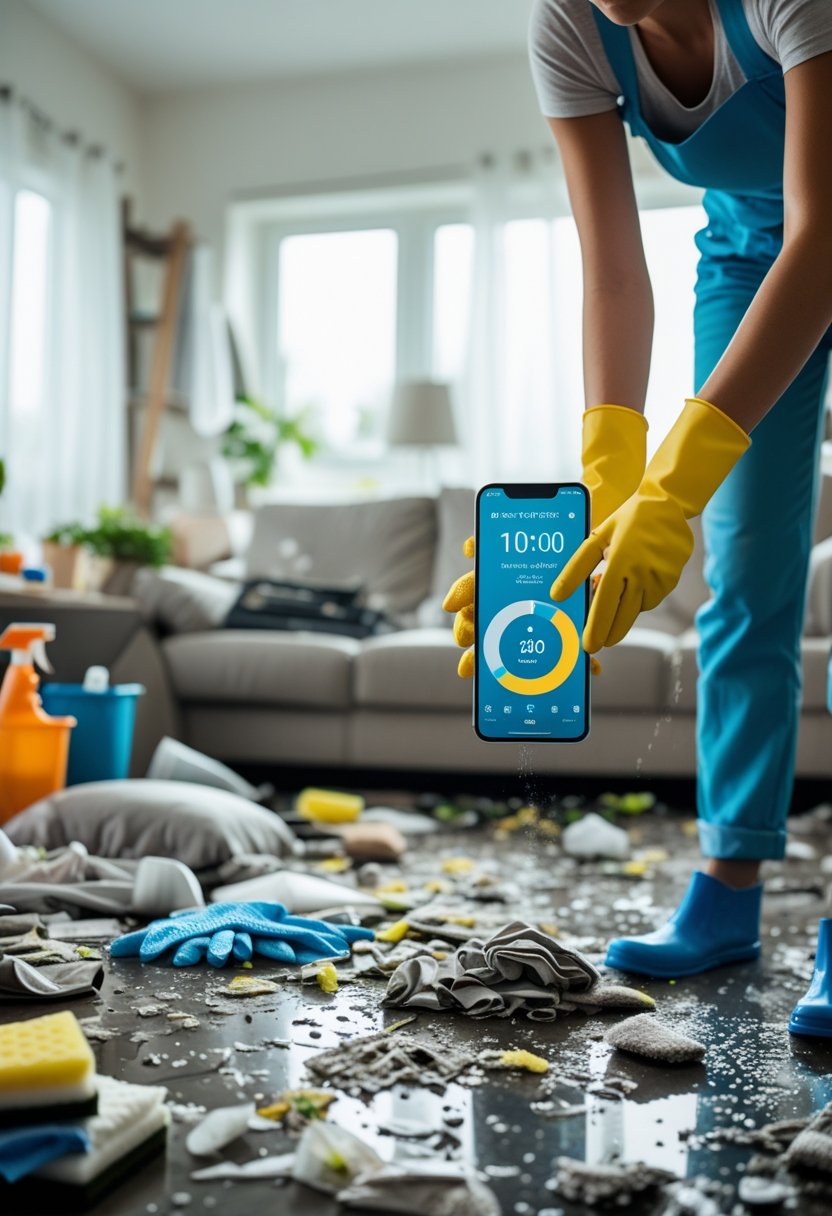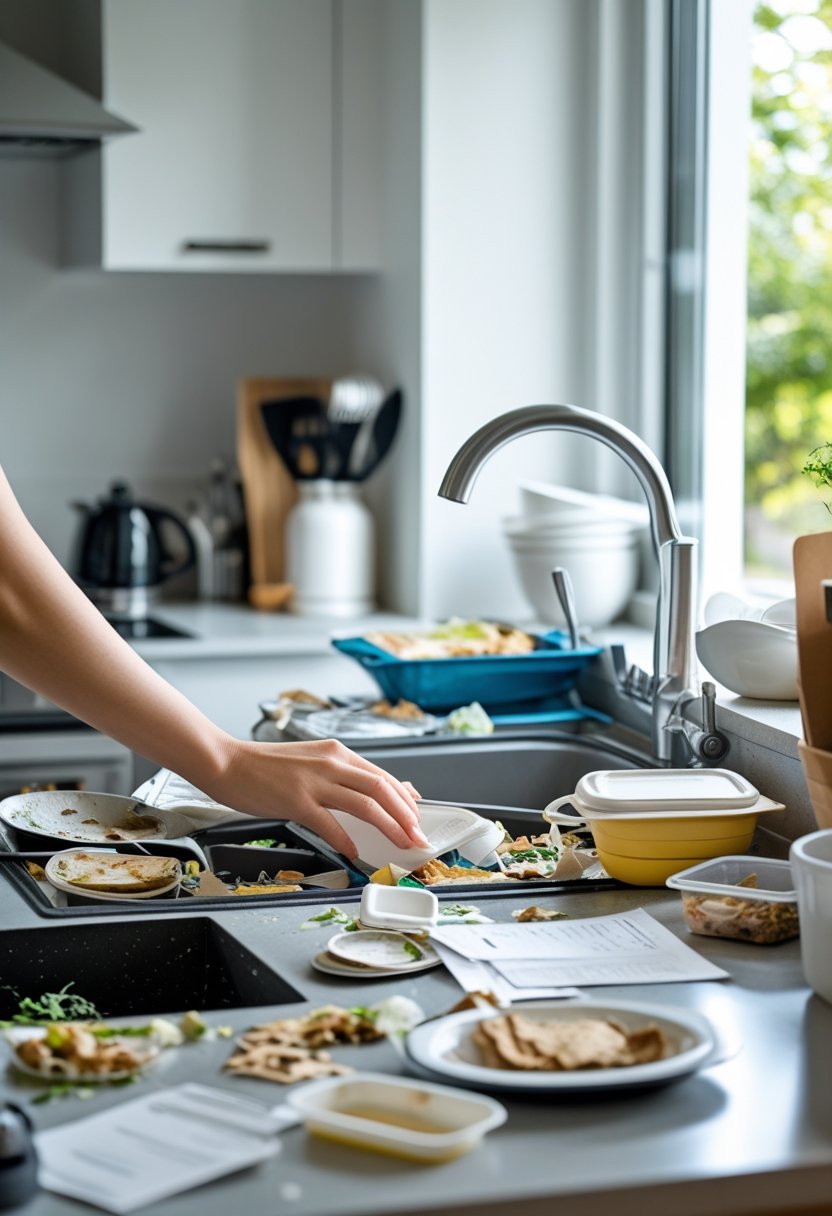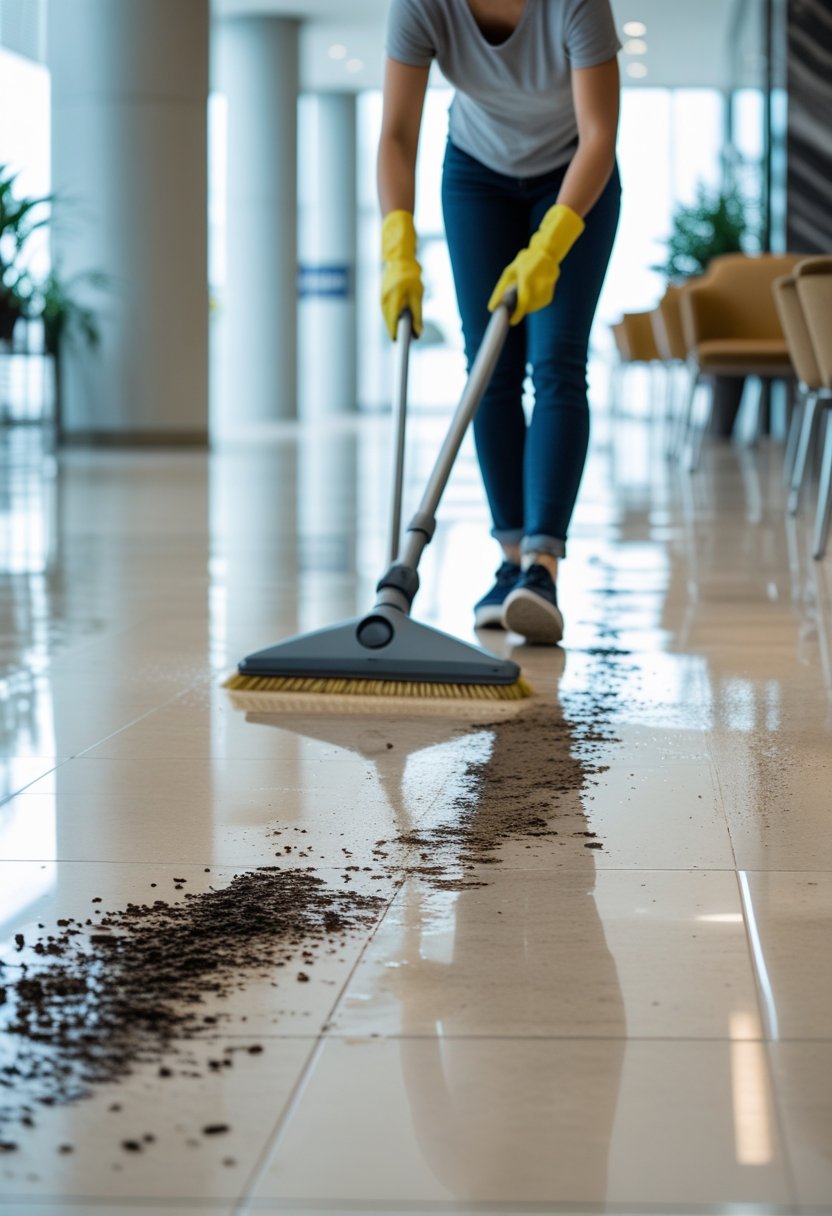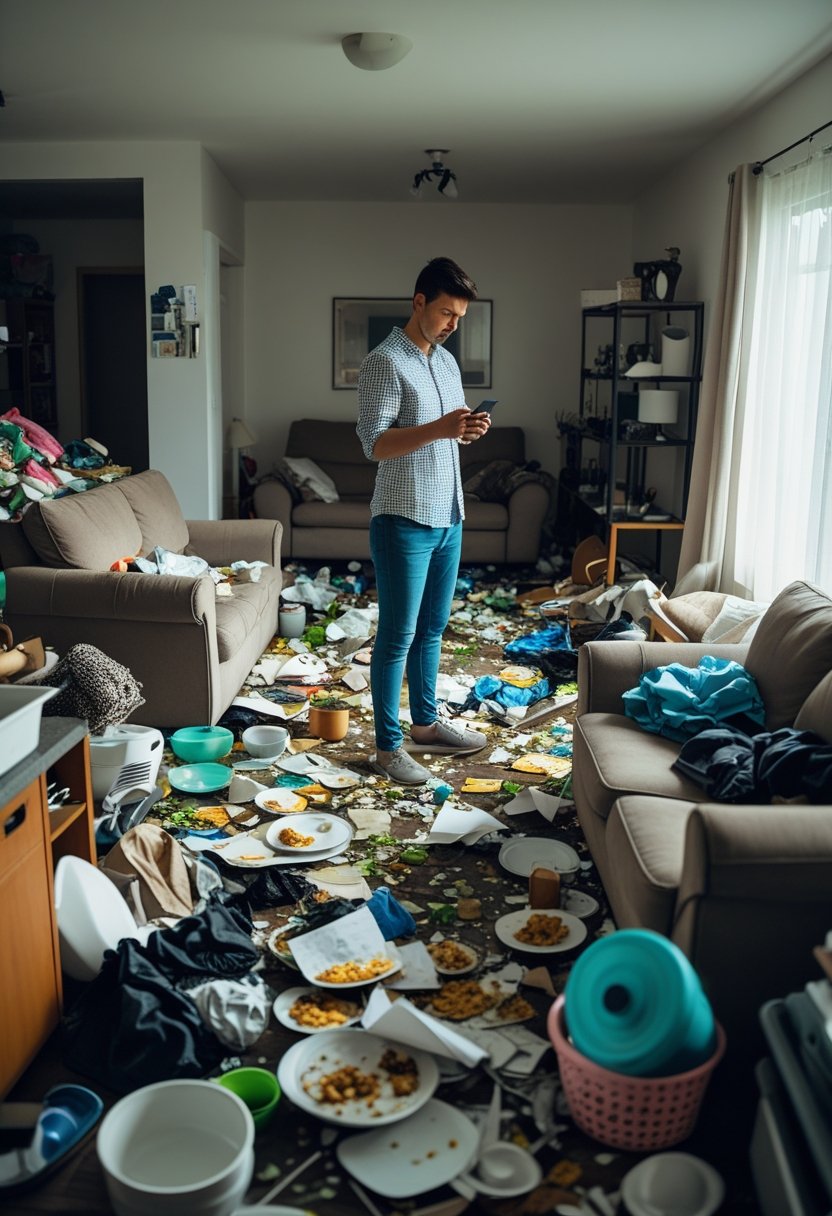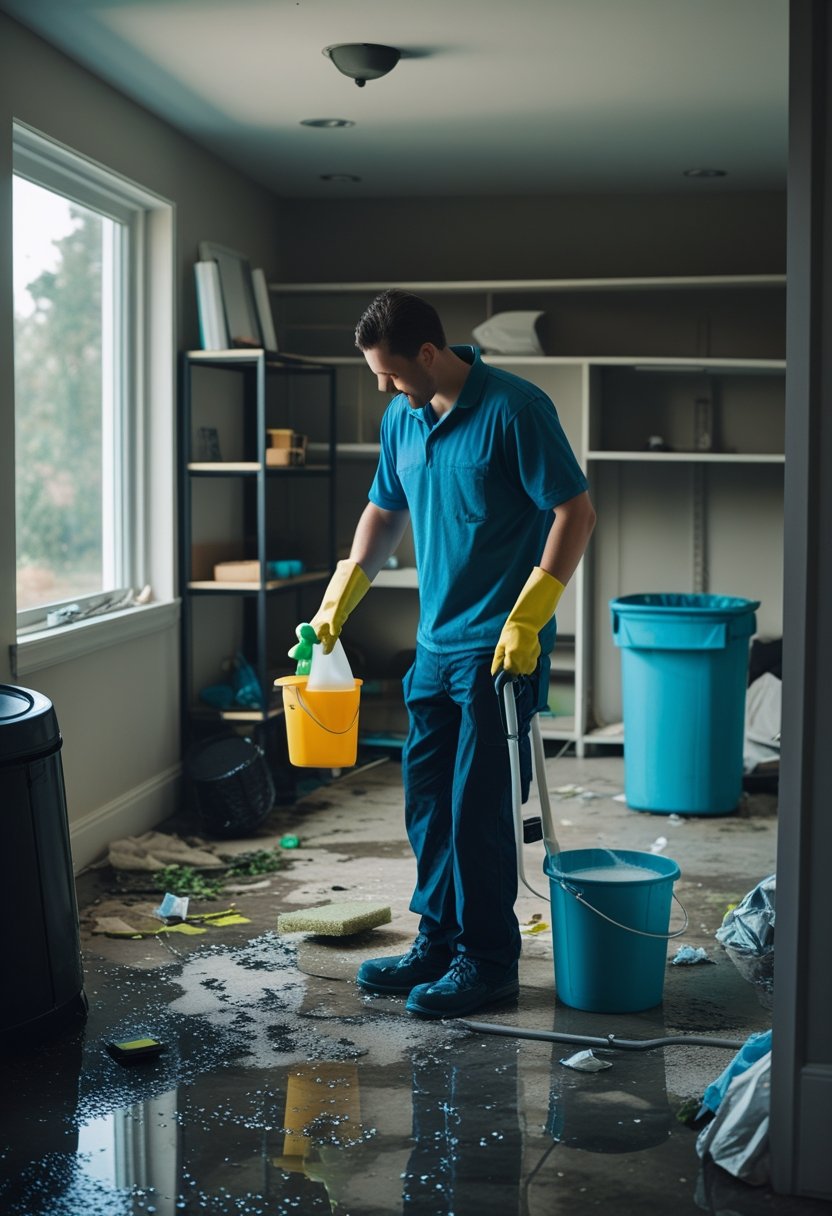When faced with a disgusting mess, it can feel overwhelming to know where to begin. I understand how daunting it is to stand in the middle of clutter and chaos, unsure of how to tackle it without getting stressed or giving up.
The key to starting is to break the mess into manageable parts and focus on one small area at a time. This approach helps create progress without feeling paralyzed by the size of the task ahead. Taking simple, clear steps makes cleaning more achievable.
Start with the kitchen to clear counters and wash dishes quickly
When I face a disgusting mess, I begin with the kitchen. Clearing countertops helps create an immediate sense of order. It also opens up space, making the rest of the cleaning easier.
I focus on gathering dirty dishes first. Loading the dishwasher or hand-washing the most urgent items clears the sink and counters fast. This step reduces clutter and prevents smells from spreading.
Wiping down counters after dishes are cleared is crucial. It removes crumbs, spills, and sticky spots that can build up quickly.
Starting with a clean and organized kitchen sets a practical pace. It feels manageable to handle and encourages moving on to other messy areas.
For a quick routine, I use a method where I reset the kitchen nightly by putting away stray items, wiping surfaces, and taking out trash if needed. This keeps the kitchen from slipping into chaos during the day and helps avoid overwhelming messes later.
More details on this approach are available in a quick and effective kitchen cleaning guide.
Tackle visible trash and remove it from all rooms first
The first thing I do when facing a disgusting mess is to grab a trash bag and start collecting all visible trash. This means anything obvious: wrappers, empty containers, papers that clearly need throwing away. I don’t overthink it; if it’s trash, it goes straight into the bag.
I make sure to do this in every room before moving on. Trash tends to accumulate in multiple places, so clearing it out completely helps create immediate progress. Removing what’s unnecessary first clears my space and my mind.
I also remember to check the floors—they often hide trash that can slow down the whole cleaning process. Throwing away obvious garbage early helps me focus on deeper clutter and dirt later.
By starting with visible trash removal, I set a foundation to organize and clean more efficiently. It’s a simple step but crucial to tackling any overwhelming mess based on advice from declutteringyourlife.com.
Gather and sort laundry to reduce clutter visibly
I start by collecting all the laundry in one spot. This gives me a clear view of what needs washing and helps cut down on clutter quickly.
Next, I sort clothes by color, fabric type, and washing instructions. Sorting this way prevents damage and keeps my clothes looking good longer.
Using baskets or bins makes it easier to separate clean from dirty laundry. It also keeps the space organized and prevents piles from forming again.
I often use vertical space for storage. Installing shelves above the washer and dryer holds detergents and cleaning supplies within easy reach, reducing clutter on counters. For more tips, visit this guide on how to declutter your laundry room effectively.
Focus on clearing pathways to improve movement in the house
When I start cleaning a really messy house, the first thing I focus on is clearing pathways. This helps me move around freely and prevents feeling overwhelmed by clutter blocking my way. It also makes the space feel more open.
I begin by removing items that are directly obstructing doors, hallways, and common walking areas. These are usually things like piles of clothes, bags, or random objects left on the floor. Clearing these paths creates a mental boost, making the task less daunting.
After clearing the main walkways, I tackle surfaces near those paths to prevent re-blocking. Keeping pathways clear lets me clean smarter and faster. It also improves safety by reducing tripping hazards.
This approach fits well with the advice to declutter and organize before deep cleaning. By focusing on easy movement first, I establish order that sets the tone for the rest of the cleaning process. For more details on this method, you can check out tips on how to fix your home’s flow.
Set a timer for a non-stop one-hour cleaning sprint
When faced with a disgusting mess, I find setting a timer for one hour helps me focus. I commit to cleaning non-stop during that time, avoiding distractions. This technique turns an overwhelming task into something manageable.
I start the timer and tackle the worst areas first. Knowing there’s a clear end point motivates me to keep going. It’s easier to push through when I can see progress within a set period.
If I feel tired after one hour, I take a break. Then, I can return for another sprint if needed. This method is effective because it breaks down the mess into smaller, achievable goals.
Using a timer also stops me from over-cleaning or getting stuck on minor details. Instead, I aim to cover as much ground as possible within the hour. You can read more about the one-hour cleaning approach at Homes and Gardens.
Declutter one small area like a countertop or shelf
When facing a large mess, I find it helpful to focus on a single small area first. Choosing a countertop or a shelf is manageable. It lets me see quick progress without feeling overwhelmed.
I start by removing everything from the surface. Then, I sort items into three groups: keep, donate, and toss. This helps me make clear decisions and reduces unnecessary clutter.
Working on a small area also gives me a specific place to return to later. I set a timer for 15 to 20 minutes to keep my efforts focused and avoid burnout. This method breaks the task into smaller, achievable steps.
By tackling one spot at a time, I make steady progress. You can read more about starting small to avoid overwhelm at simpleeverydayhome.com or get tips on micro-areas at apartmenttherapy.com.
Do a quick sweep or vacuum of high-traffic floors
When I’m faced with a disgusting mess, I know that high-traffic floors are one of the first places to address. These areas collect the most dirt, crumbs, and debris, making a big visible difference when cleaned quickly.
I recommend starting with a quick sweep or vacuum of these spots. It doesn’t have to be perfect or cover the entire floor. Just focusing on key areas like entryways, kitchens, or living rooms can instantly freshen the space.
Vacuuming is especially effective because it removes dust, dirt, and allergens that accumulate in busy spots. Using the right attachments helps me get into corners and under furniture easily.
A quick floor clean creates a cleaner feeling environment and makes the rest of the cleaning process feel more manageable. For more tips on addressing high-traffic areas efficiently, I find guides on effective cleaning strategies for high-traffic areas helpful.
Assessing the Severity of the Mess
Before diving into cleanup, I evaluate the mess to understand its complexity. This helps me decide which areas require urgent attention and what tools or protections I need.
Understanding Different Types of Contamination
Not all messes are the same. Some involve only clutter and dust, while others include biological hazards like mold, pet waste, or food spoilage. I separate the mess into categories:
- Dry clutter: Papers, clothes, general disorganization
- Wet or sticky spills: Food remnants, liquids, mildew
- Biohazards: Mold, feces, bodily fluids
This classification shapes my cleaning approach. Biohazards need special treatment and often stronger disinfectants, while dry clutter focuses on decluttering first.
Safety Precautions and Protective Gear
Safety is critical in severe messes. I always equip myself with gloves to protect my hands from germs and chemicals. A mask is essential, especially when dealing with mold or dust, to prevent respiratory irritation.
I also use eye protection when handling harsh cleaners or if there’s risk of splashing. For extremely contaminated spaces, I opt for disposable coveralls or old clothes I can discard. These precautions prevent exposure to harmful agents and keep the cleanup manageable.
For guidance on how to quickly clean a messy house, I follow steps outlined in resources like the one from theincrementalmama.com.
Developing an Effective Cleaning Strategy
When facing a severe mess, it helps to focus on specific areas that affect health and safety first. I also pay close attention to limiting the spread of germs and dirt as I move through the cleaning process.
Prioritizing High-Risk Areas
I always start with places where dirt and germs are most likely to cause problems. Bathrooms and kitchens top my list because they are breeding grounds for bacteria. In bathrooms, cleaning mirrors, sinks, and toilets early removes grime and prevents odors.
In the kitchen, I focus on appliances and surfaces where food is prepared. Wiping down the stove, fridge handles, and counters kills germs that could cause illness. Clean towels and linens in these areas also matter, so I make sure to replace or launder them promptly.
Targeting these high-risk spots first means I lower health risks and make the space more functional quickly.
Minimizing Cross-Contamination
To keep mess and germs from spreading, I divide cleaning tools by area. For example, I use one set of cloths and gloves for the bathroom and a different set for the kitchen. This separation prevents contaminants from traveling between spaces.
I also clean from top to bottom—starting with surfaces like shelves or light fixtures before finishing with floors. This way, dust and debris don’t fall onto freshly cleaned areas.
Paying attention to hand hygiene is crucial during the process. I wash or sanitize my hands frequently and avoid touching my face while cleaning.
These steps make the cleaning more efficient and safer overall.
For more detailed tips on tackling overwhelming clutter and mess, I recommend this guide on how to clean a messy house effectively.

Hi, Ehtesham Here, I like to upload content about fashion and scents, and I love sharing ideas. My goal is to help others in finding outfits and Scents.

